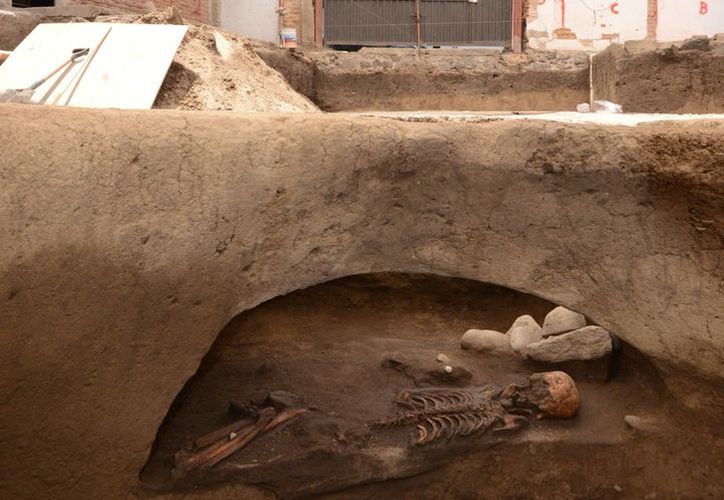
[ad_1]
Agency
CITY OF MEXICO.- In the settlement La Otra Banda, in an area adjacent to the pantheon of San Rafael, INAH specialists discovered an occupied area 2,700 700 years where women developed activities that could be related to perinatal care, reports Millenium Daily
You may also be interested: Tropical storm Emilia is formed in the Pacific
Cavities that presents the property Callejón La Otra Banda, of 360 square meters, corresponds to 26 tombs of the medium formative periods (700 to 400 BCE) and late formative periods (400 to 200 BC), which archaeologists recorded at a depth of between 1.23 m and 3.30 m below the level
Antonio Balcorta Yépez and Montserrat Alavez Ortúzar, experts of INAH's Directorate of Archaeological Recovery (DSA), have invested four months of work squ 's to reach this level of excavation. ion. Thanks to the collaboration of the architect Jose Juan Medina Garcés, responsible for the real estate project that will be carried out on the site, archaeologists have made the extraction of materials by levels.
"Up to now we have detected four professional stages, ] four historical epochs related to the early twentieth century, the Porfiriato, independent Mexico and the pre-Hispanic era ", explains Balcorta.
Explains that in the most superficial layer the remains of a rural house were recorded from the late nineteenth and early twentieth century, with blocks of adobe and tepezil, roofs of bricks and beams and brick floors.
Due to its characteristics and construction date, this house could serve as a prototype of the houses of the workers who worked at the Loreto paper mill.
On the ground were found remnants of ammunition from a battle that in 1914 released carranci stas and zapatistas.
On a lower level the foundations of tezontle and basalt of the nineteenth century rooms remained, in association with the ceramics called Oaxaca policromo, which was elaborated between 1800 and 1900.
Under this level "we n & # We have no presence of stands of pre-Hispanic periods that are closer.There is a lapse of 2,000 years without evidence of human presence, which refers us to the volcanic activities recorded in the south and south-east of the basin (50 years before our era at 280) which led to the abandonment. "
The good preservation of the preclassical contexts of the Zacatenco and Ticomán phases is due to the fact that the land is located at the top of a hill. hill at 2 thousand 296 meters altitude, so it was not covered by the lava of the Xitle.
In the pre-Hispanic layer, there were remnants of walls that defined rooms, paved and packed. Archaeologists have decided to record each of these elements in three dimensions to continue the excavation that led to the location of 26 pits, 11 shaped truncated cone.
"We had a series of discoveries that revolutionized our knowledge of preclassic tombs."
"The contexts suggest that we are facing a village where specialized activities have been carried out." The height, the geographical and strategic position, indicates that the inhabitants of this hill could have a greater control over certain resources. , in comparison with the village of Copilco. "
To confirm this hypothesis, the register is made and take samples from different points of the pits: the mouth or the entrance, the walls and the bottom of these, as well as the different layers of earth and pebbles, with the aim of performing chemical and pollen analyzes for each of them The discovery of the tronconónicas pits usually associated with the spaces habitación and had the function to contain waste, being places of storage of grains and artifacts as well as funerary use. But here we found some graves that indicate the daily work of women. This is the case of herbal steam baths, as part of perinatal care.
E n the pits were recorded more than 130 figurines q which mainly represent pregnant women and infants in minor measure These pieces have a red, yellow and black pigmentation on the face, neck, the navel, hands and legs.
With the exception of some nineteenth-century intrusions that affected at least four pre-Hispanic tombs, one partition was in perfect condition. of conservation. They were methodically covered with a pebble and a tezontal stopper, and ritually closed.
[ad_2]
Source link